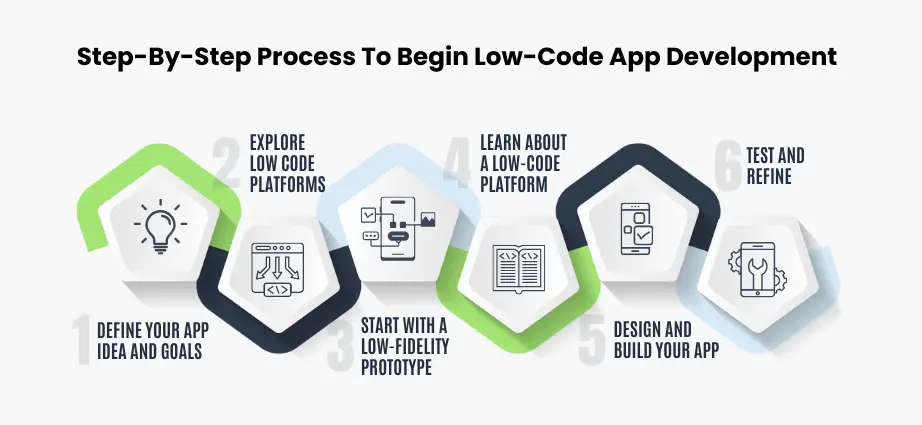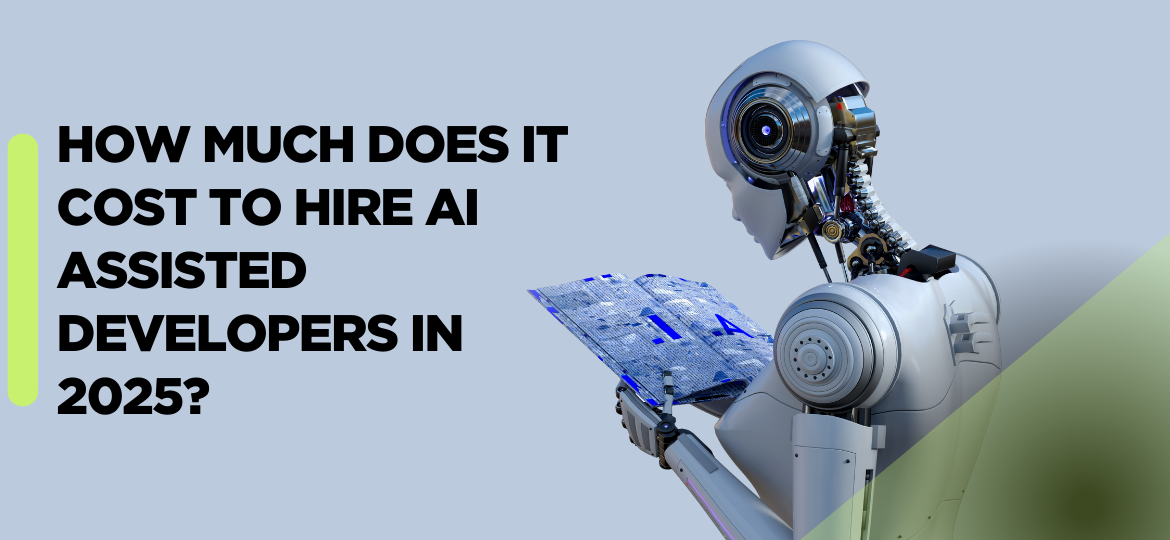AI (Artificial Intelligence) has emerged as a transformative force within technology’s ever-evolving landscape, revolutionizing industries and altering our approaches to problem-solving. Indeed, its incorporation into software development projects has proven transformative; unlocking unprecedented levels of efficiency while driving innovation forward for creating more sophisticated apps.
As we progress further into 2025, developers adept at using AI tools and methodologies are in increasing demand, necessitating businesses and project managers to consider all financial implications pertaining to hiring an AI developer (2025). This comprehensive guide offers insight into various factors which impact this cost as a means for engagement of an AI-powered developer.
In this guide, we cover everything from talent rates across experience levels and project complexity, to geographical location as a factor in budget optimization strategies. By delving deeply into cost breakdown, hiring model and optimization strategies outlined, readers will gain invaluable insight. Ultimately this budget guide ensures informed decisions to foster innovation without overstretching resources.
Understanding the AI-Assisted Developer in 2025
Software development roles are rapidly shifting; by 2025, AI-assisted developers won’t just be seen as trendy; they will become the norm. AI tools provide developers with a valuable aid during every aspect of software development lifecycle from writing code faster, debugging complex issues more efficiently and generating comprehensive test cases; these powerful assistants also suggest code snippets real time as well as identify bugs before becoming major issues so developers can work smarter instead of harder!
This transformation signals an important shift in developer focus: Gone are the days of tediously hand coding every line; instead they have become architects and strategists guiding AI tools, outlining high-level logic structures, overseeing intelligent systems generating much of the foundational code. This frees up time for creative problem-solving, complex architectural design tasks, quality assurance measures related to AI generated components, as well as human creativity-requiring aspects. With AI now playing such an essential part in project creation, more time can be spent concentrating on innovation aspects requiring human ingenuity. These aspects truly require human ingenuity from developers than before coding manually every line in terms of programming by hand!
AI assistance offers several clear benefits. First, it significantly speeds development speed; AI tools automate repetitive tasks for faster project development from concept to launch. Furthermore, its use also enhances code quality. AI can detect errors, suggest optimizations and ensure consistency resulting in more robust and reliable software products, thus improving overall project outcomes. Businesses benefit greatly from faster development cycles and higher-quality code; businesses can get products out to market more quickly, respond more rapidly to changes more effectively, and reach strategic goals more successfully when hiring AI-assisted developer talent. When investing in hiring these talent experts, your productivity increases substantially; therefore freelance rates or in-house/outsourced AI cost discussions must now incorporate this increased output of these AI tools.
Core Cost Components for AI-Assisted Developers in 2025
As 2025 approaches, it’s essential that companies recognize that hiring an AI developer requires investing more than simply their salary alone. Numerous key components make up your total expenditure and their variability helps create a realistic AI development budget guide.
| Cost Component | Description | Typical Impact on Budget | Key Considerations |
|---|---|---|---|
| Developer's Experience Level | The seniority of the AI developer (junior, mid, senior, architect). More experienced developers command higher rates. | Junior: Lower hourly/salary. Good for defined tasks. Mid-Level: Balanced cost and capability. Suitable for core development. Senior/Architect: Highest rates. Critical for complex projects, strategy, and problem-solving. |
AI engineer cost per hour increases significantly with experience. |
| Geographical Location | Where the developer is located (e.g., North America, Western Europe, Eastern Europe, Asia). This impacts living costs and market demand. | High: North America, Western Europe. Moderate: Eastern Europe, Latin America. Lower: Asia (especially India, Southeast Asia). |
AI developer rates by region vary widely. Remote work offers flexibility here. |
| Engagement Model | How you choose to onboard talent (freelance, in-house, agency, staff augmentation). | Freelance: Flexible, project-based hourly rates. In-house: Fixed salaries, benefits, overhead. Agency: Project-based or higher hourly rates, full-service. Staff Augmentation: Blends internal and external teams. |
This choice heavily influences your in-house vs outsourced AI cost. |
| Project Complexity & Type | The difficulty and scope of the AI solution (e.g., simple chatbot, custom deep learning model, enterprise-wide AI system). | Simple: Lower development hours, fewer specialists. Complex: Extensive data, advanced algorithms, longer timelines, specialized expertise. |
Custom AI models are much more expensive than using pre-trained APIs. |
| Technology Stack & Tools | The specific AI frameworks, libraries, cloud services, and proprietary tools used. | Open-source: Low or no direct licensing costs. Cloud Services (AWS, Azure, GCP): Usage-based fees, can be significant. Proprietary APIs/Software: Licensing fees, subscription costs. |
Infrastructure (e.g., GPU usage for training) adds to cloud costs. |
| Data Requirements | The need for data collection, cleaning, labelling, and ongoing data pipeline management. | Can be a substantial hidden cost, especially for large or specialized datasets. Requires data engineers or scientists. | High-quality, properly labelled data is crucial but costly. |
| Post-Launch Maintenance & Optimization | Ongoing costs for monitoring, retraining AI models, bug fixes, and performance tuning. | Typically 15-25% of initial development cost annually. Essential for long-term AI effectiveness. | Ensures your AI solution remains relevant and performs optimally. |
| Infrastructure & Compute | Hardware and cloud resources needed for training, deploying, and running AI models. | Scalable costs based on data volume, model complexity, and user traffic. Can include GPUs, storage, and networking. | Cloud costs can become a significant recurring expense. |
| Regulatory Compliance | Ensuring the AI system adheres to legal and ethical standards (e.g., data privacy, bias detection). | Adds complexity and requires specialized expertise in certain industries. | Non-compliance can lead to severe fines and reputational damage. |
Cost to Hire AI‑assisted Developers in 2025
Understanding the cost to hire AI developer 2025 is crucial when planning to leverage artificial intelligence for any business venture. Many factors directly affect this investment decision; consider freelance rates which typically operate hourly allowing for flexibility; however for longer-term projects or core products the in-house vs outsourced AI cost becomes critical decision. Hiring an AI engineer salary US 2025 varies significantly based on experience and location. For instance, an experienced senior AI engineer working within one of America’s major tech hubs will often command much higher pay than a junior developer working within regions with lower costs of living.
Model development costs can add significantly to project expenses. Building simple AI features or integrations using existing APIs may cost less; on the other hand, creating complex custom AI models from scratch requires substantial investments of time, talent, computational resources, and energy – an AI development budget guide can prove indispensable in accounting not just developer fees but also hidden expenses such as data preparation fees, cloud infrastructure fees and ongoing maintenance expenses; ultimately empowering you to make informed decisions regarding AI initiatives.
Factors Influencing the Total Cost Of Hiring AI Developers

Project Complexity and Scope
An AI project’s complexity and scope play an essential part in its cost of creation; for example, developing something simple such as chatbot or recommendation engine typically require less resources to develop successfully. As well as reduced costs and expertise requirements, developing basic AI systems requires less specialized expertise; conversely, advanced AI requires deep learning which may involve tasks like real-time computer vision analysis or natural language generation or autonomous decision-making.
Projects of this scope typically necessitate extensive data preparation, complex model architecture design, significant computational power usage and highly experienced AI engineers. Custom AI model development from scratch will almost invariably result in longer timelines and higher expenses; additional iterative testing may also be required and integration with existing systems will have an impactful influence over its complexity and cost.
Engagement Model
Your engagement model choice can have an enormous effect on the cost of hiring AI developers. Independent contractors provide more flexibility, making this option cost-effective for smaller tasks or short-term projects. AI developer freelance rates generally range between $20 to $200 an hour depending on location and expertise, though larger, ongoing initiatives might prefer in-house AI developers for greater control and to ensure deeper cultural integration and long-term knowledge retention.
However, these options carry higher fixed costs; yet can deliver solutions more rapidly. Staff augmentation, which combines internal teams with external specialists for faster solution delivery. It offers the ideal balance of flexibility with internal oversight to impact your AI development budget guide effectively.
Industry and Domain Expertise
Industry or domain in which your AI solution will reside plays an essential part in determining developer costs. Highly-regulated sectors, like healthcare, finance and automotive require developers with more than just technical know-how – they need knowledge of relevant compliance standards as well.
Examples include HIPAA for healthcare, GDPR for data privacy or stringent financial regulations – these specialized skills often command premium rates; an AI developer creating an antifraud detection system at a bank will require extensive knowledge of their instruments and security protocols.
Attracted by higher compensation and greater workload requirements than general e-commerce recommendation engines, developers who specialize in specific domain expertise often command higher fees due to data complexity, critical decisions made within specific industries, potential cost implications of errors affecting specific industries. They also have higher demand from their employers for them, driving costs higher in return.
Post-Launch Maintenance and Optimization
Project cost AI model development goes far beyond initial development and deployment of AI models. Maintenance, post-launch optimization and continuous enhancement are essential in order to keep an AI model accurate, relevant and cost effective over time. For instance, model monitoring helps detect performance degradation while regularly retraining with fresh data can prevent “data drift”. Retraining models to keep accuracy intact is another ongoing task essential to this ongoing task list.
Applying bug fixes and security patches are crucial, while adapting the system to evolving business needs or new regulatory requirements requires dedicated AI/MLOps (Machine Learning Operations) engineers. Annual maintenance costs usually range between 15%-25% of initial development cost; complex systems with mission critical applications often incur even greater maintenance expenses. Ignoring this step could result in reduced returns from your AI investment as well as system failures leading to costly redevelopments later down the line; accordingly this must be considered in any AI development budget guide.
Regulatory Compliance
Navigating the complex landscape of AI regulatory compliance adds another significant cost component. As AI systems become increasingly prevalent, governments and international bodies are introducing stringent regulations relating to data privacy (GDPR), algorithmic transparency (e.g. TCPA), bias detection/prevention as well as ethical AI deployment practices.
Ensuring your AI solution meets these evolving legal and ethical frameworks requires dedicated efforts from developers, legal specialists, and compliance officers alike. Implementing robust data governance strategies; designing explainable AI models; performing regular bias audits and maintaining comprehensive audit trails are just a few tasks involved with adhering to regulatory adherence – however costly this investment might be. This makes regulatory adherence an integral component of responsible AI development.
Conclusion
Conclusion In 2025, hiring AI-assisted developers involves numerous key cost drivers: project complexity, engagement model selection and industry expertise requirements are just three. There may also be ongoing expenses such as post launch maintenance/optimization fees as well as regulatory compliance expenses which all contribute towards making up your overall investment total cost.
AI investments offer long-term value and ROI that far outstrip their costs. AI solutions increase efficiency, improve decision-making capabilities and open new avenues of innovation; while streamlining operations, decreasing human error and providing competitive advantages. Therefore, investing strategically is not simply expenses; rather, they act as catalysts to spur future growth and market leadership.
AI-assisted development is a long-term investment in efficiency and innovation that demands careful planning and budgeting. Ready to see how AI could transform your business? Echoinnovate IT offers full-cycle AI software development services. Our expert AI and machine learning engineers deliver end-to-end custom development tailored to suit each project’s specific requirements – contact us now so we can begin work on smarter digital solutions together!
How Much Does It Cost to Hire AI‑assisted Developers in 2025?
How much does it cost to hire an AI-assisted developer in 2025?
The cost typically ranges from $25 to $200+ per hour, depending on the developer’s experience, location, and project complexity. Junior AI developers in regions like Asia or Eastern Europe may be on the lower end, while senior architects in North America or Western Europe command premium rates.
What factors influence the cost the most?
Key factors include:
Developer’s experience level (junior, mid-level, senior, architect)
Geographical location (US/Europe vs. Asia/Latin America)
Engagement model (freelance, in-house, agency, or staff augmentation)
Project complexity (simple chatbot vs. enterprise-wide AI system)
Technology stack, data requirements, and infrastructure costs
Are AI-assisted developers cheaper than traditional developers?
Yes and no. AI tools (like Copilot, ChatGPT, and automated testing frameworks) can speed up development, reducing man-hours. However, experienced AI developers still command high salaries because they know how to properly leverage AI, debug complex issues, and handle ethical/quality concerns.
How do engagement models affect costs?
Freelancers: Flexible, hourly rates, good for small projects.
In-house hires: Salaries + benefits, higher upfront commitment but stable long-term.
Agencies: Full-service, but usually the most expensive per hour.
Staff augmentation: Blends internal and external resources, balancing cost and expertise.
What hidden costs should I expect?
Data preparation (cleaning, labeling, pipelines)
Cloud services (compute, GPUs, storage)
Post-launch maintenance (model retraining, monitoring, bug fixes)
Compliance with data privacy and AI regulations
How much does post-launch maintenance cost?
Expect 15–25% of the initial development budget annually for ongoing monitoring, retraining, optimizations, and support.
Is it cheaper to hire AI developers offshore?
Yes. Rates in India, Southeast Asia, and Eastern Europe are often 50–70% lower than in North America or Western Europe. However, consider communication, time zone differences, and quality of work.
Can startups afford AI-assisted developers in 2025?
Yes. Thanks to AI coding tools, small teams can achieve more with fewer developers, making AI-assisted development more affordable. Startups often combine one senior AI engineer with AI tools to reduce costs while maintaining quality.



